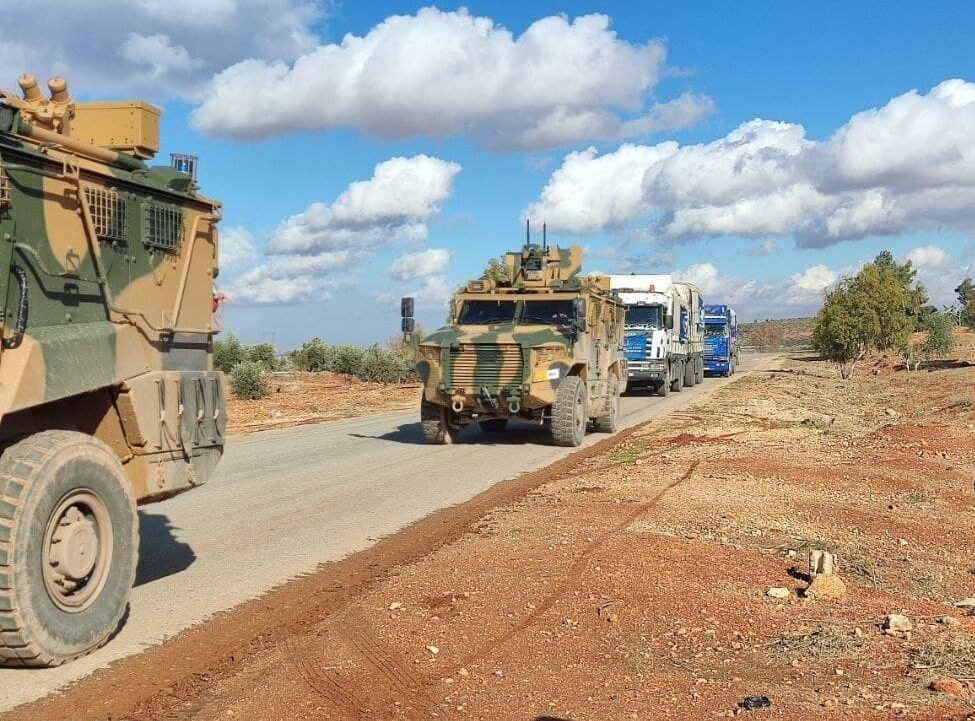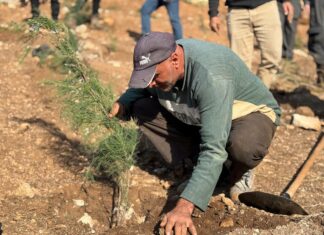
Today, 14 trucks carrying humanitarian aid from the World Food Program (WFP) crossed into the liberated areas through the Miznaz Fronts, to the west of Aleppo and to Maarat al-Naasan, in Idlib’s eastern countryside. This was the third batch following the two that crossed during August 30th-31st.
Over the years, Russia has worked to stop the delivery of humanitarian assistance through border crossings by vetoing UNSC’s resolutions on cross-border aid delivery to northwestern Syria.
In July, it had been decided by the UNSC to extend the entry of cross-border aid through the Bab al-Hawa border crossing with Turkey, along with cross-line deliveries. The Ministry of Development and Humanitarian Affairs of the SSG negotiated a new deal, in which the SSG would have complete control of the distribution of UN aid coming in from the regime-held areas.
Cross-line delivery is the distribution of UN relief aid through the lines of contention between the regime-held regions into the liberated areas, which Russia has long advocated for.
The mechanism came with widespread criticism from the locals as it meant dealing with the Assad regime, and letting them reap its benefits. Nevertheless, the authorities of the liberated region were left with no choice other than to accept the deal in order to continue (and extend) cross-border delivery through Bab al-Hawa.
Russia has threatened on several occasions to veto the UNSC’s draft resolution on the renewal of the Bab al-Hawa crossing as a humanitarian aid gate to northwestern Syrian regions which was to be decided on the 9th July. They have repeatedly demanded cross-border aid operations to be substituted with cross-line humanitarian mechanisms under the control of the Syrian regime. Nonetheless, the UNSC unanimously passed resolution 2585 of 2021 authorizing cross-border aid operations to Syria for another year through the Bab al-Hawa crossing.

However, weighing the pros and cons – the aid that enters from cross-line deliveries is minute compared to what enters through Bab al-Hawa every month. Monthly, an average of 1,000 trucks enter through the Bab al-Hawa crossing, of which 75% are food items. In November alone, 1,367 trucks delivered 2,7931 tons of aid through the crossing — 76.1% food items, 21.4% logistics and 0.9% medical components.
Even though the aid enters from the areas controlled by the Assad regime, it plays no role in any of the aid that enters to the liberated regions through the cross-line mechanism. This was part of the main agreement which was decided upon by the authorities — once the aid enters the liberated areas, all distribution is done through them.
Furthermore, the process is simply transferring aid from warehouses in regime-controlled areas to warehouses in Idlib. This is exclusive of any involvement from the regime, nor does it have any of their members entering the liberated areas.
According to the SSG, the aid is to be transported through contractors and intermediaries to reach the warehouses in Idlib. The Ministry of Development and Humanitarian Affairs confirmed the details of the deal in a statement which was released at the same time (late August) the aid arrived.
The need for humanitarian assistance in Syria originates from the UN Security Council meetings of 2014, where the global community voted on the decision to provide aid through entry points in rebel-held areas across the borders of neighboring countries as an exceptional measure. This resulted in a vote to approve the draft decision to introduce aid directly across the borders of Bab Al-Hawa and Bab Al-Salama, both crossing exist on the Turkish-Syrian border, the Al-Yarubiyah border crossing of Syria-Iraq and the Ramtha border crossing of Jordan-Syria.
However, a condition was implemented that an annual vote would occur to renew the decision. The Bab al-Hawa crossing remains as the last lifeline for the liberated region after the closure of the rest of the crossings from receiving such aid deliveries.





